Nicotine / THR - Statements from Organizations
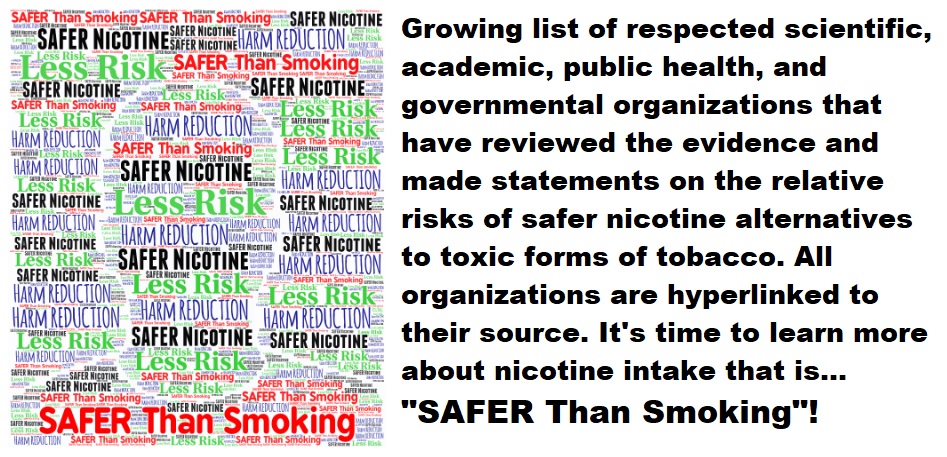
"Tobacco Harm Reduction = SAFER than smoking"
The items list below may also be found on this Google Doc
Multinational pt. 1/International
World Health Organization EURO Office

European Parliament
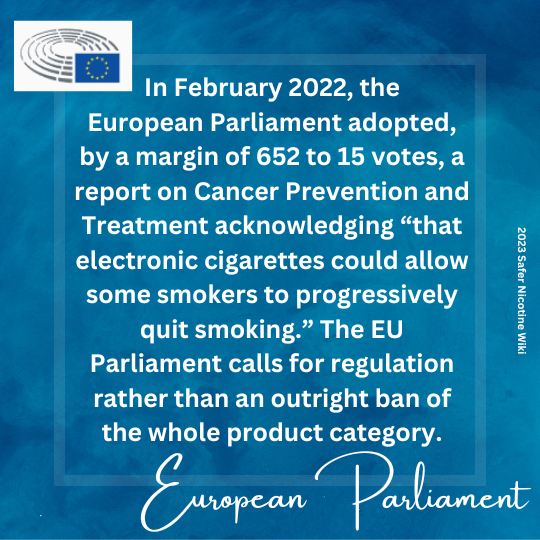
SCENIHR - European Commission Directorate-General, Health & Consumer Protection

Cochrane systematic evidence review
- Source
- 78 scientific studies (including >34 randomized control trials) involving 22,052 participants in a dozen countries. This 2022 update replaces their 2021 evidence review, based on 61 studies, which found “moderate certainty evidence.”
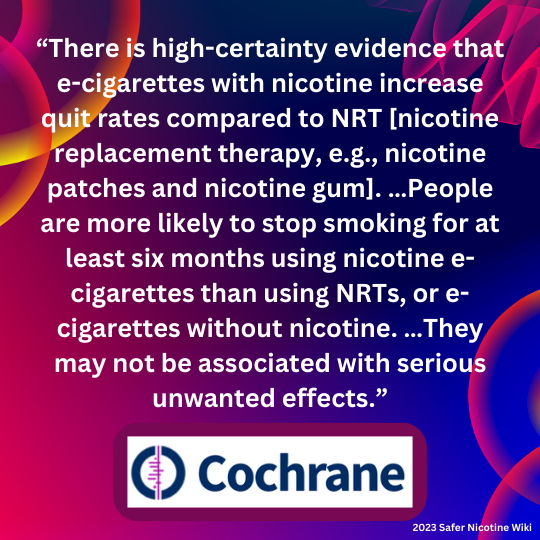
15 past presidents of the Society for Research on Nicotine and Tobacco (SRNT)
- Source
- NOTE: This is not a statement by the SRNT.
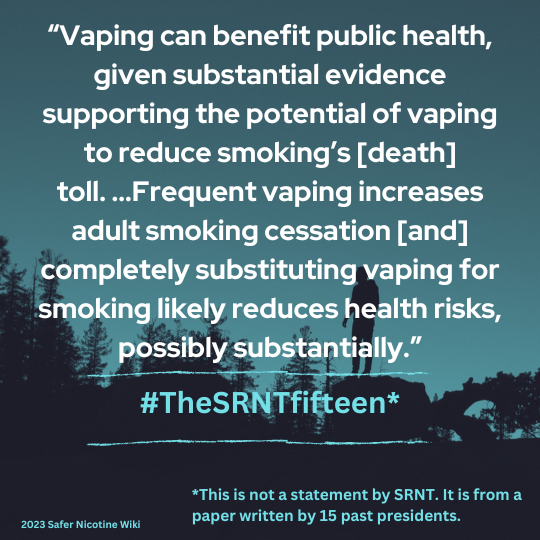
The Tobacco Atlas
- The Tobacco Atlas is a collaborative publication by Vital Strategies & Tobacconomics at the Institute for Health Research and Policy.
- Vital Strategies was formed out of a merger between World Lung Foundation and The Union.
- Source
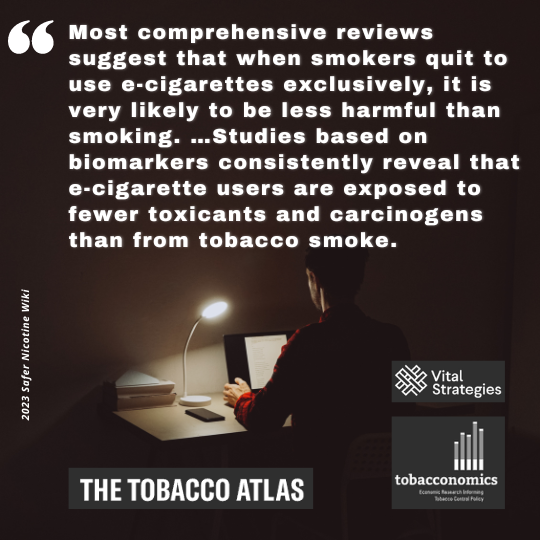
Multinational Pt. 2 - United Kingdom (Or any of the following individually: England, Ireland, Scotland, Wales)
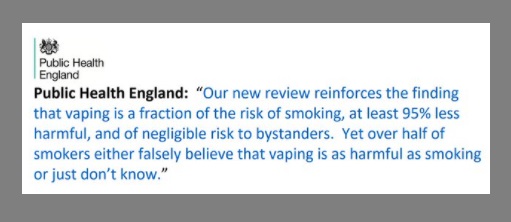
![The report… provides the most robust evidence on health risks of vaping to date. …Vaping poses a small fraction of the risks of smoking. …There is: Significantly lower exposure to harmful substances from vaping compared with smoking, as shown by biomarkers associated with the risk of cancer, respiratory and cardiovascular conditions [and] no significant increase of toxicant biomarkers after short-term secondhand exposure to vaping among people who do not smoke or vape.](/mediawiki/images/d/d3/8th_evidence_review_of_nicotine_vaping_in_England.png)
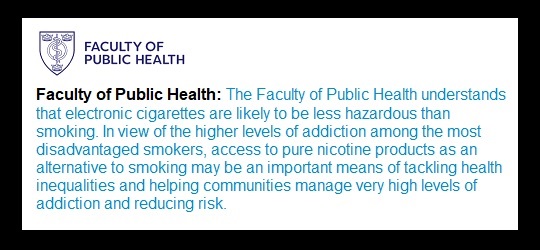
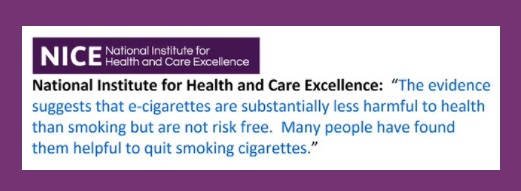


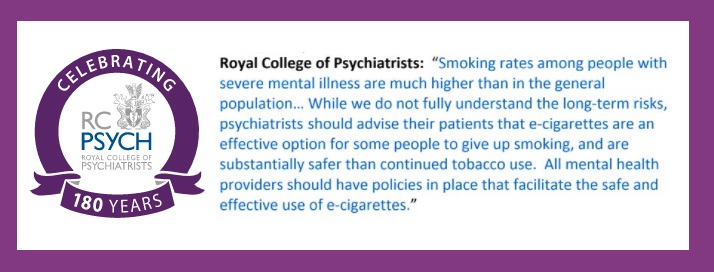
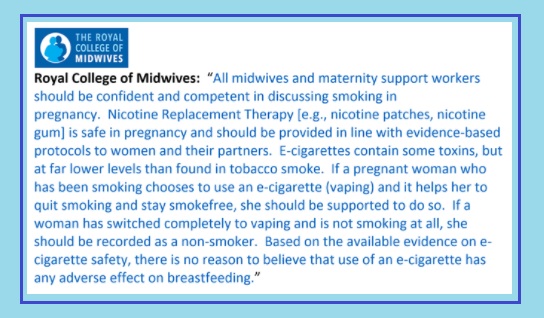


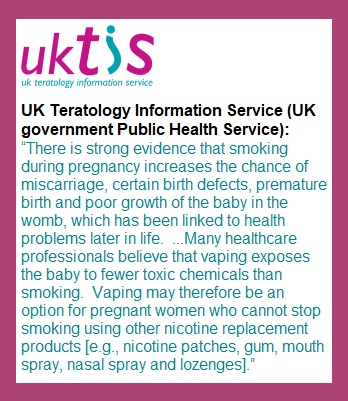
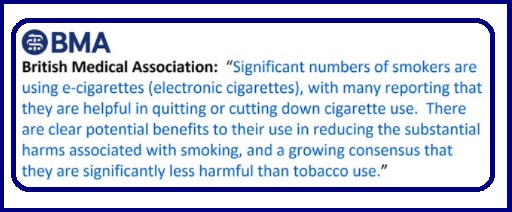
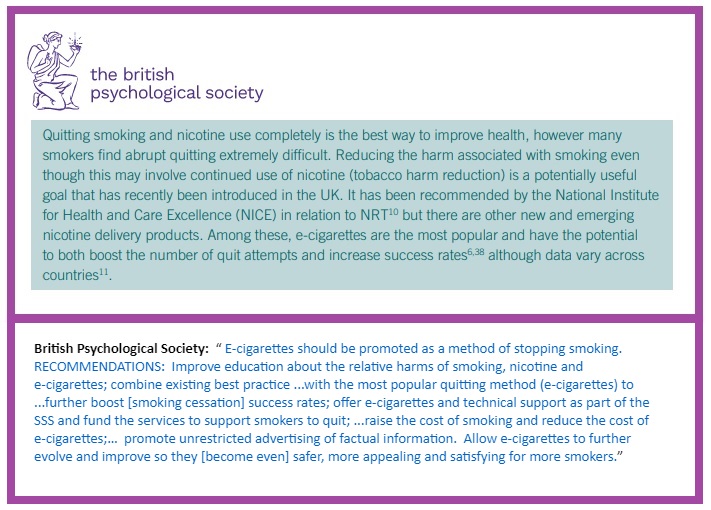


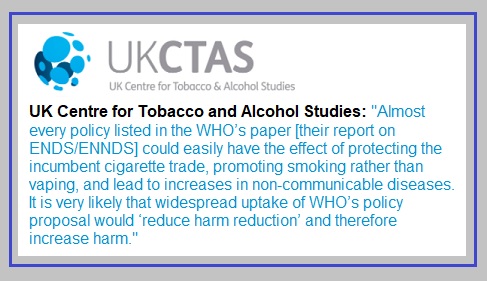
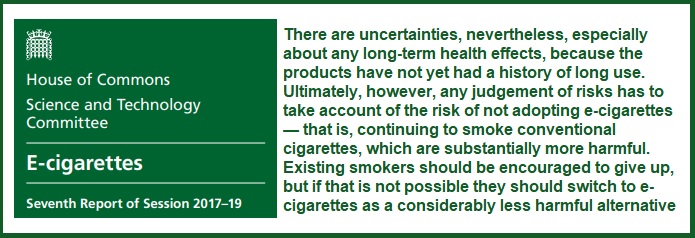
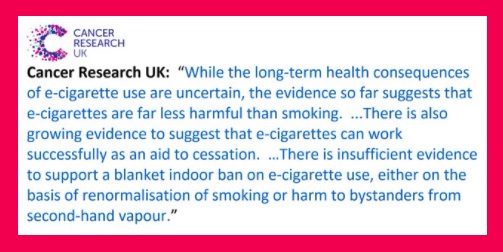


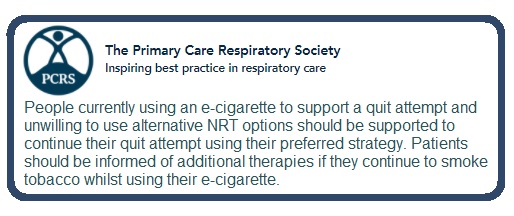

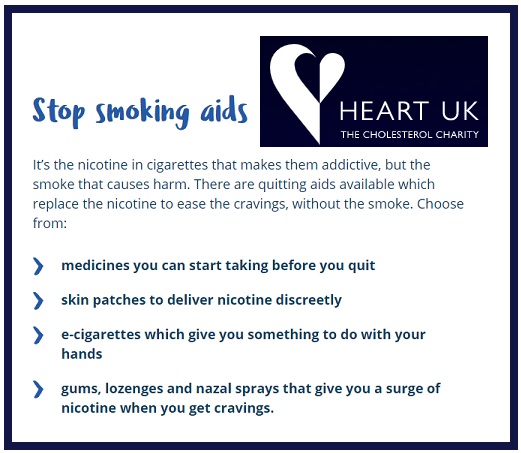




- Drug Science UK





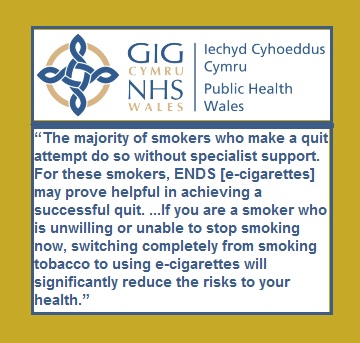
Australia (See Also: "Australia and New Zealand")


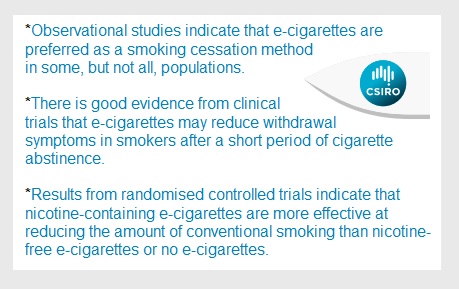
Australia and New Zealand

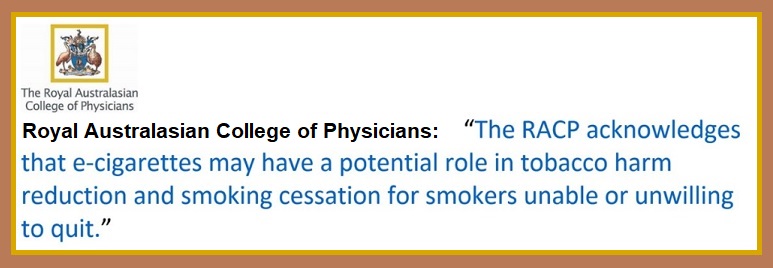
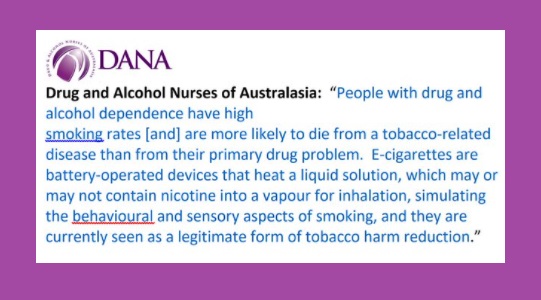
Belgium
Belgian Superior Health Council
“Yes, the e-cigarette has its risks, but is clearly less harmful than a traditional tobacco cigarette. According to the Council, the e-cigarette can therefore be a tool to give up tobacco completely.” [Google Translate]
Canada
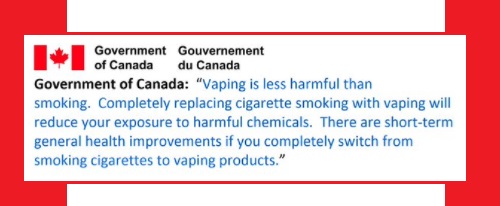
Health Canada
“If you are an adult that currently smokes, switching completely to vaping is a less harmful option than continuing to smoke. …Vaping is not known to cause Popcorn lung.” (January 2023) “While vaping products are not harmless, vaping exposes people who smoke to lower levels of harmful chemicals than continuing to smoke.” Statement from Minister of Health (January 16 2023).
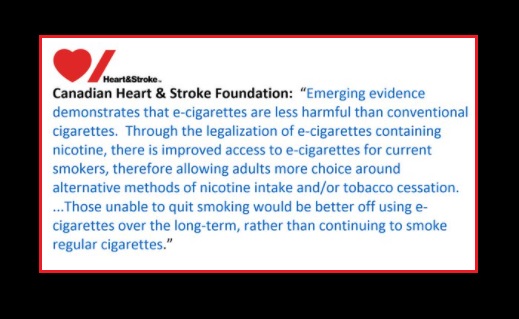
Centre for Addiction and Mental Health +3 organizations - Canadian Lower-Risk Nicotine Use Guidelines (LRNUG)
“Funded by Health Canada’s Substance Use and Addictions Program, the LRNUG has developed several resources to help guide people who use, or are thinking about using nicotine, on how to lower the risk associated with these products. ...E-cigarettes with nicotine may be an effective cessation aid for people who use combustible tobacco. People who switch from combustible tobacco to e-cigarettes will reduce their exposure to numerous toxicants and carcinogens.” Quick Tips: “Using tobacco in forms that don’t burn, like smokeless tobacco or heat-not-burn products, will reduce your exposure to harmful combusted chemicals including carbon monoxide. [You can] further reduce your risk by switching to products that don’t have tobacco like NRT [e.g., nicotine patches or nicotine gum] or e-cigarettes.” Statement by: CAMH - Centre for Addiction and Mental Health, Pharmacists for a Smoke-free Canada, The Ontario Tobacco Research Unit, Centre for Effective Practice
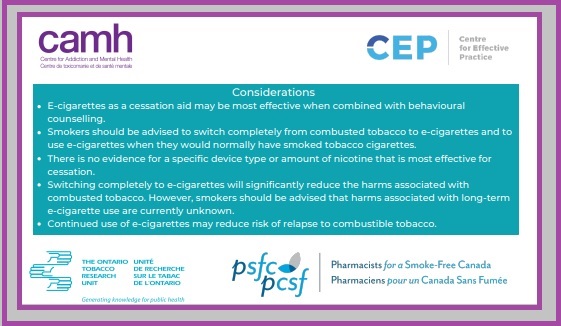


England (See Multinational pt. 2/United Kingdom)
France
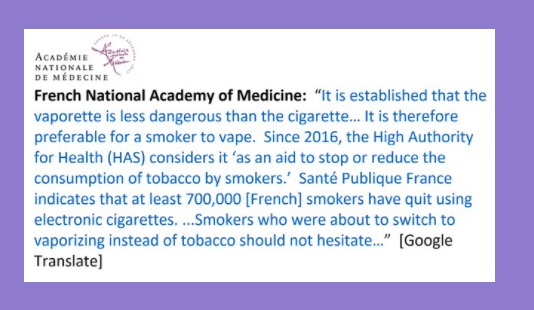
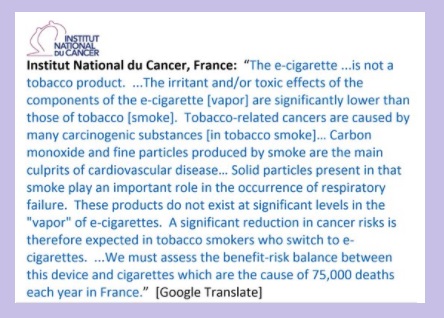
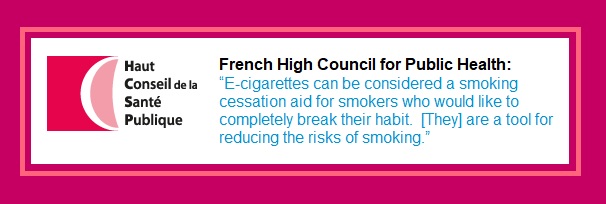

Collège de la médecine générale (College of General Medicine)
“Concerning the electronic cigarette, we consider it as a risk reduction tool and believe that we should not discourage the smoking patient who is learning to vape with a view to weaning [reducing smoking] by indicating to him that it is necessary to avoid the use concomitant cigarette/e-cigarette.”
Germany

German Society of Addiction (Deutsche Suchtgesellschaft – Dachverband der Suchtfachgesellschaften)
“In general, one can assume that the vapor from an e-cigarette is much less harmful than conventional cigarette smoke and that the e-cigarette can be used for nicotine withdrawal if guideline-based psychotherapeutic and/or drug treatments for nicotine withdrawal are ineffective or unwanted.”
Ireland (See Multinational pt. 2/United Kingdom)
Isle of Man
Public Health Isle of Man
“E-cigarettes can be a particularly helpful way to stop smoking tobacco especially when combined with a specialist face to face support. Although experts say they are not entirely risk free, they are at least 95% less harmful than tobacco.”
Luxembourg
Malaysia
New Zealand (See Also: "Australia and New Zealand")
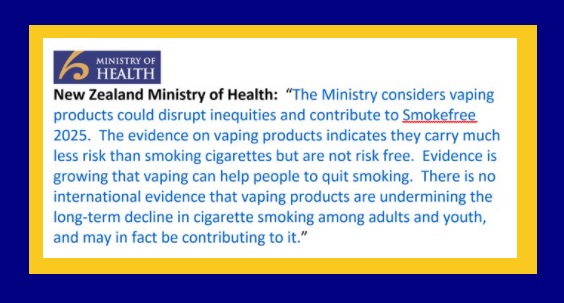
Official New Zealand Ministry of Health Position Statement
“Vaping is not harmless but it is much less harmful than smoking. Vaping has the potential to help people quit smoking and contribute to New Zealand’s Smokefree 2025 goal.” Organizations that support this statement include: Health Promotion Agency/Te Hiringa Hauora (HPA), Hāpai te Hauora/Māori Public Health, New Zealand Medical Association (NZMA), Action for Smokefree 2025 (ASH), National Training Service (NTS), All District Health Boards, Pharmacy Guild of New Zealand, New Zealand Heart Foundation, New Zealand College of Midwives, Parents Care Centre

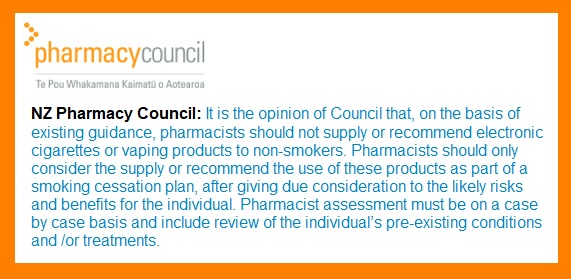
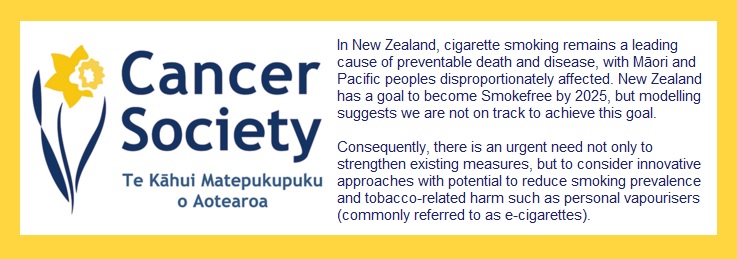
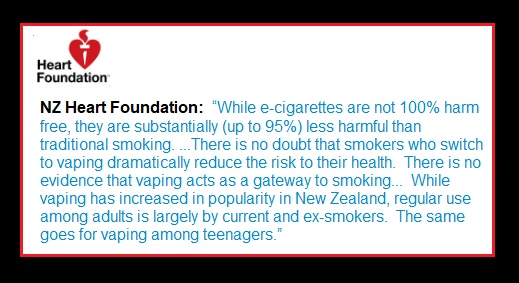
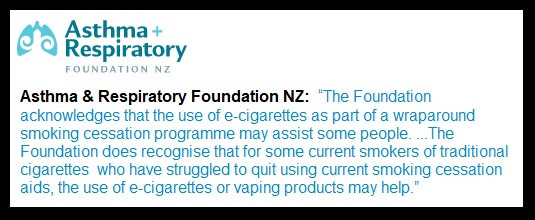
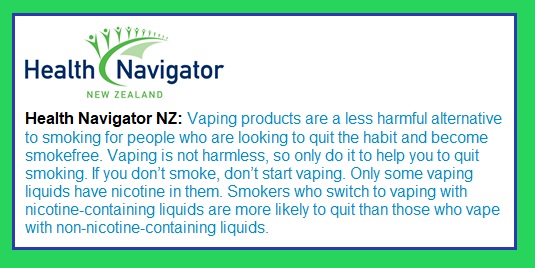
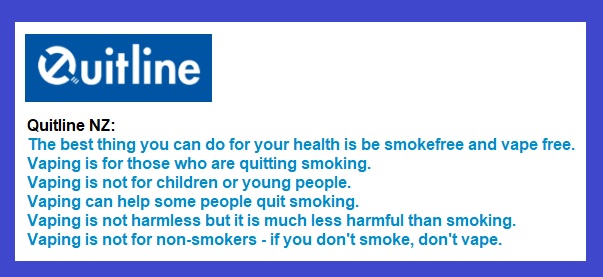
Philippines
Scotland (See Multinational pt. 2/United Kingdom)
United Kingdon (See Multinational pt. 2/United Kingdom)
United States
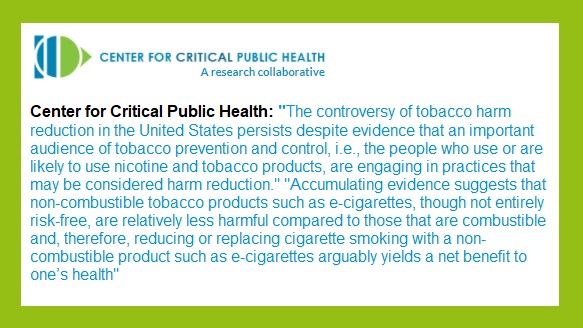

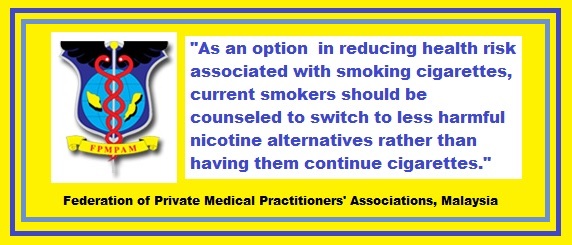
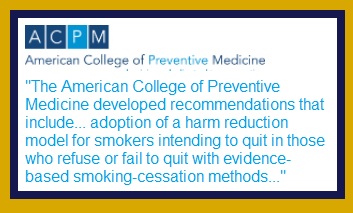
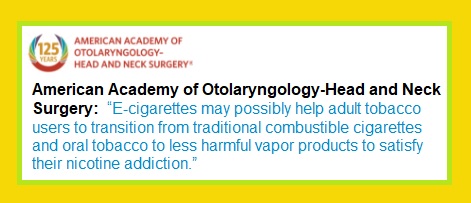
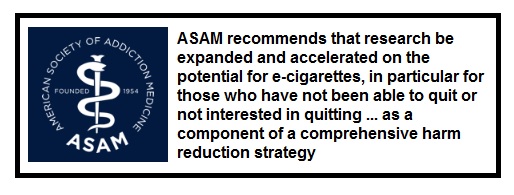

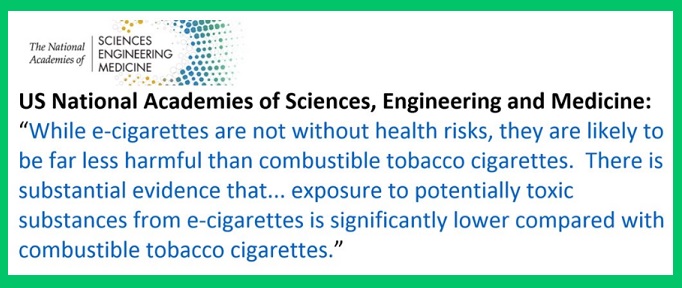
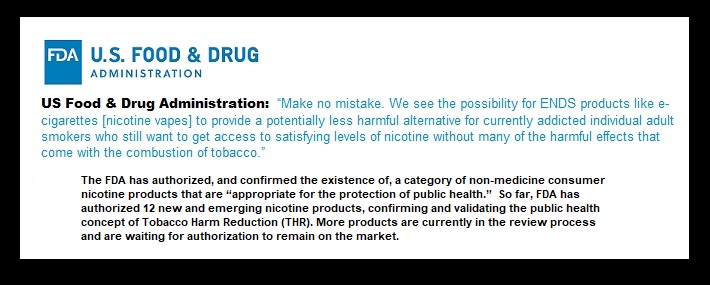
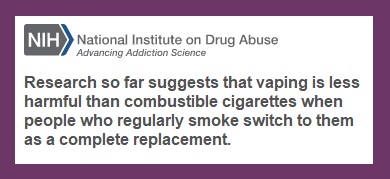
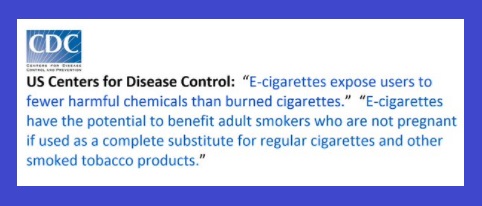
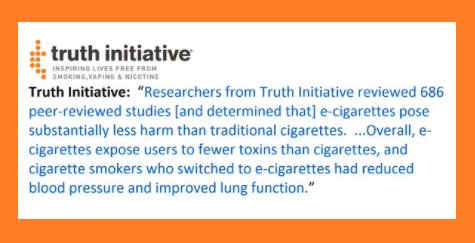



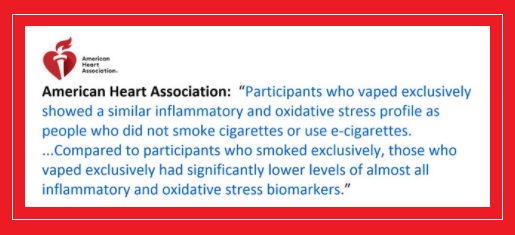
2021

2018
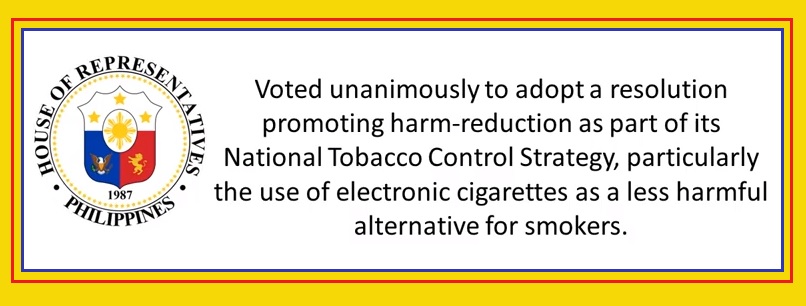
2022

Uruguay
Wales (See Multinational pt. 2/United Kingdom)
Suggestions to add to this page
- "Smoking rates are dropping, thanks to price increases associated with tobacco taxes, smoking bans, and other evidence-based practices outlined in the WHO Framework Convention on Tobacco Control.Even if these practices are scaled up, however, millions of smokers will still suffer death, disease, and disability. Alternative tobacco products, including e-cigarettes, aren’t harmless, but they may be less harmful. We need to understand whether they could change the course of the smoking epidemic without addicting youth.”
2021: The Sheffield Tobacco Control Board Policy Position on electronic-cigarettes (also known as vaping)
- While abstinence from tobacco use is the ideal, the next-best result, for individuals who can’t or don’t want to quit nicotine, is movement down the continuum of risk: away from combusted tobacco to a less harmful product. One possible alternative: E-cigarettes.